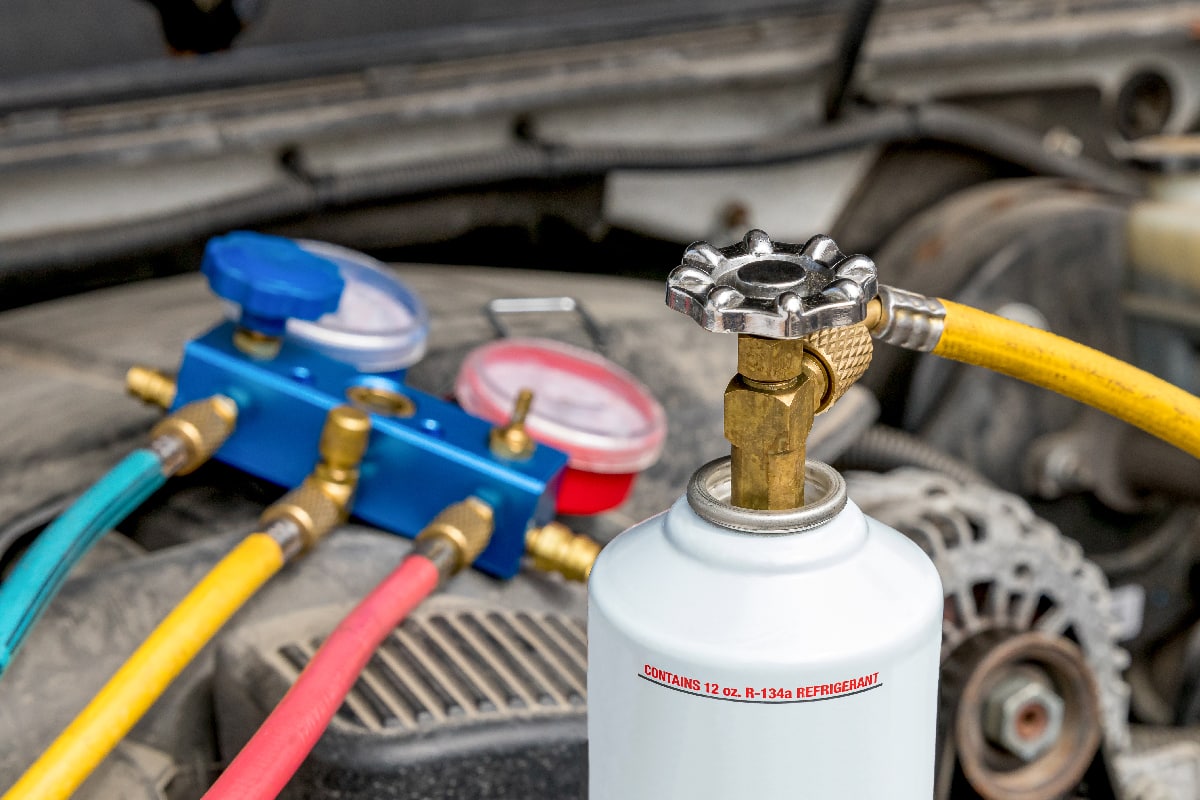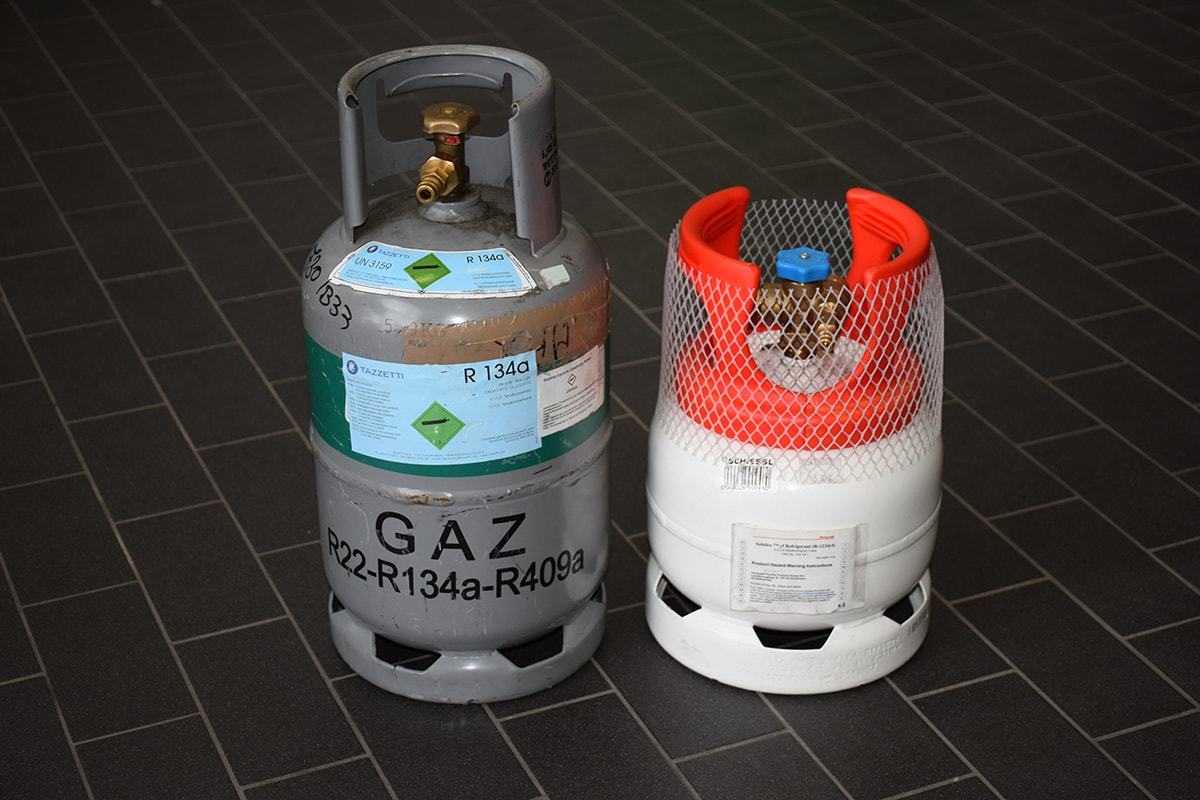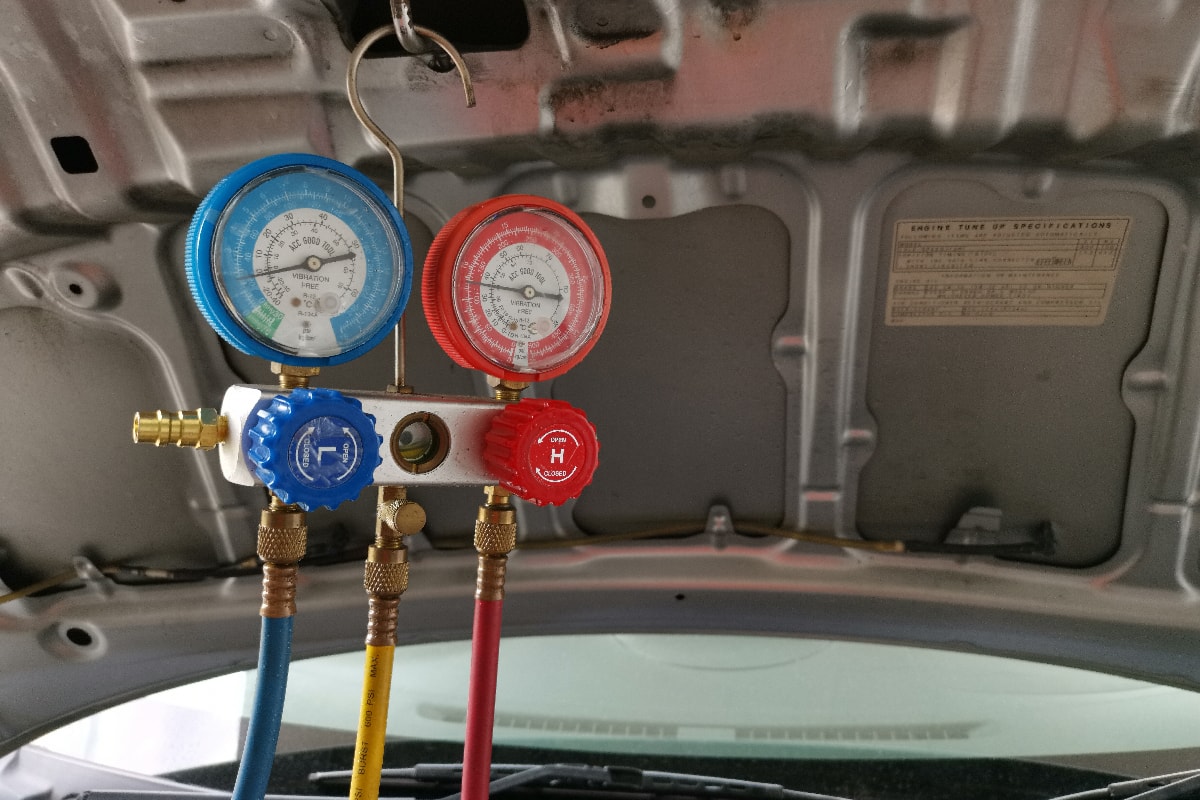It is irritating when you drive on a hot day and your car's air conditioner is blowing hot air. And the number one culprit is low AC refrigerant. And A/C Pro is the perfect DIY refrigerant recharge product to fix that. So, we researched how it works and how to use it. Here is what we found.
A/C Pro works by adding refrigerant to your car's AC system. It also fixes small AC system leaks that may have been the issue's root in addition to restoring lost refrigerant.
To use it, simply squeeze the trigger to add A/C Pro, gently shaking and twisting the can in the process. When the gauge's needle signals that the system is fully charged, keep pulling the trigger. However, beware of overcharging.
Continue reading as we share a step-by-step guide on how to charge your car's AC with A/C Pro. We'll also cover other A/C Pro products and how to use them. Additionally, we'll also delve into the possible causes of low refrigerant levels in your car. We'll also discuss scenarios that might exempt the use of A/C Pro.

A Step-By-Step Guide On How To Charge Your Car's AC With A/C Pro
The refrigerant charging task can be divided into three parts:
- Preparing The Service Port
- Charging The AC
- Finishing
1. Preparing The Service Port
- Open the hood when the engine is off and look for the low-pressure A/C service port. Save the port after removing the plastic cap.
- Start the car and activate the air conditioning. Set the temperature to the lowest setting and the fan to the highest setting. Ensure that the recirculation mode is chosen.
- Pull the connector ring back while pushing the fitting on to attach the fast connect fitting at the connection between the low-pressure service port and the recharge hose's end that was previously specified.
- Check the gauge to see which color part the needle is pointing toward without pulling the trigger. Depending on the hue, choose the following step using the grid below:
- White (Low)- This means that the system has low refrigerant. Proceed to the next step to start the recharging procedure.
- Green (Filled)- When the needle is located in the green area, the system is fully charged, and no extra refrigerant is required. The AC was likely malfunctioning when the green needle within the AC indicated other system issues in addition to low refrigerant.
- Yellow- Additional refrigerant is not needed.
- Red (See Instructions)- Verify the compressor clutch is in place before checking the pressure. Make sure the car is running and the AC is turned on if the compressor is not engaged. Do not add refrigerant if the needle is in the red and the compressor is cycling. Call your technician when this happens.
2. Charging The AC
- Remove the trigger assembly's connection to the service port. Remove the plastic spacer that was between the trigger assembly and the can by unscrewing it.
- Screw the can onto the gauge/trigger assembly after a good shake. On the low-side port, connect the quick connect back.
- Before beginning to charge, always hold the can in an upright position.
- To charge the A/C system, squeeze the trigger. Shake the can up and down as it charges, switching between the 12 and 3 o'clock positions. Release the trigger once every 10-15 seconds.
3. Finishing
- Check the pressure readings on the gauge when the needle has stabilized.
- Charging is finished once the needle reaches any point in the green zone of the gauge. Avoid attempting to raise it to the top of the green zone to avoid overcharging.
- When finished, remove the hose from the service port and reinstall the plastic cap. Any unused refrigerant should be kept in a cool, dry location with the charging hose well fastened to the can.
You can watch the whole process in this video:
How Do You Know What Refrigerant To Use For Your Car?
You can start your search for this information under the hood of your car. The label, which is often white or bright yellow, can be found by opening the hood.

It will either read "R-134a" or "R-1234yf" on this, and it might even mention the capacity. Not all automobiles, nevertheless, have this mark.
A/C Pro® has additional resources to help you figure out which refrigerant you need to recharge your car's air conditioning if you're unsure which refrigerant your vehicle utilizes.
The database will provide you with correct information on your vehicle's A/C after you enter the make, model, year, and, in certain cases, engine.
What's The Difference Between R-134a And R-1234yf?

R1234yf was developed as a more environmentally friendly alternative to R134a, despite the similarities between R134a and R1234yf.
R1234yf is slightly flammable and does need careful handling, which is the major difference between the two. The same procedure as with R134a can be used to diagnose the HVAC system.
To be sure that you're using the right kind of refrigerant, make sure to look for car labels and OEM information. Different refrigerants require various handling, storing, lubrication, and A/C equipment precautions. Whatever refrigerant you are compelled to use, make sure you are trained to manage it.
How Does A/C Pro Ensure That You Used The Right Refrigerant For Your Car Air Conditioner?
A/C Pro kits have snap-lock couplers that only function with the right kind of refrigerant. This stops the use of R-134a in systems that need R-1234yf and vice versa.
What Are The Signs That Your Car's AC Refrigerant Level Is L0w?

Here are some signs your car might exhibit when it has a low refrigerant level:
- If the air conditioner in your automobile is blasting out warm or hot air, there may not be enough refrigerant in the system. The amounts of refrigerant in your car's air conditioning system will be insufficient to cool the air if there is not enough refrigerant flowing through them.
- One of the more straightforward causes is a leak. The refrigerant that is leaking out will feel thin and look greasy. Under the hood, close to the compressor, and inside the car, there are freon leaks. You can also see it dripping from under your car.
- The compressor may have ice on it if your car's refrigerant levels are low. Water can replace refrigerant if there isn't enough of it for the compressor to decompress into the cooling refrigerant.
- When you switch on your air conditioner, the AC clutch won't engage if there is insufficient refrigerant in the system. When the clutch determines there is sufficient refrigerant in the system for the AC to operate properly, it will click. But, if you don't hear a click, the clutch hasn't engaged, and you need to check the refrigerant levels.
- The AC system on many new cars is covered in glass, making it simple to observe the liquids inside. There shouldn't be any bubbles and the liquid flowing through the system should be clear if there is enough refrigerant in the system.
Can A/C Pro Products Help Seal Leaks In Your Car's AC?
A/C Pro has products that have chemicals and substances that help seal leaks in your AC systems such as A/C Pro Superseal and A/C Pro All-In-One Solution.
Superseal
- Another excellent remedy for a leaking air conditioner is the Super Seal sealer. When it seeps through a crack or hole and comes into contact with outside air, it creates a permanent seal.
- Small leaks that are difficult to find or hard to access are perfect for Super Seal. The system must be able to maintain a refrigerant charge for more than two weeks to function effectively.
- Better yet, Super Seal will unavoidably remain in your system for years to help prevent leaks in the future.
You can get this product at this link!
All-In-One Solution
- A/C Pro contains specific lubricants in addition to the refrigerant to fix leaks and assist your compressor last longer.
- It is purposefully made to be as "foolproof" as possible so that it may be used by people who have no idea whatsoever about how an automobile air conditioner operates or even what refrigerant is.
- One of the simplest car fixes you can perform requires neither tools nor technical knowledge.
You can get this product at this link!
What Are The Exemptions Of Using A/C Pro?
Mostly, A/C Pro is the quick, simple solution to fix your car's AC problems. There are circumstances, nevertheless, in which you should not use A/C Pro and probably take your vehicle to a qualified technician. These are some of those instances:
- Your vehicle was created before 1994 and has never had its R-12 to R-134a conversion performed.
- Your air conditioner went from cold to hot in less than 2 weeks.
- Avoid using A/C Pro on your electric or hybrid vehicle. The electric air conditioning compressor used by the majority of hybrid automobiles (and all-electric vehicles) calls for a unique type of compressor oil.
- If your air conditioner was blowing cold air yesterday but is now spewing hot air, you have an issue that neither DIY troubleshooting nor an A/C technician can resolve.

In Conclusion
A/C Pro is simple, easy to use, and quickly solves your AC refrigerant leak problem. It also has a wide range of products, from refrigerant charging cans to analog and digital gauges.
However, if you already charged your system with A/C Pro and the problem persists, then it's time to let an expert check your problem.
Before you leave, you can check out these other posts:
